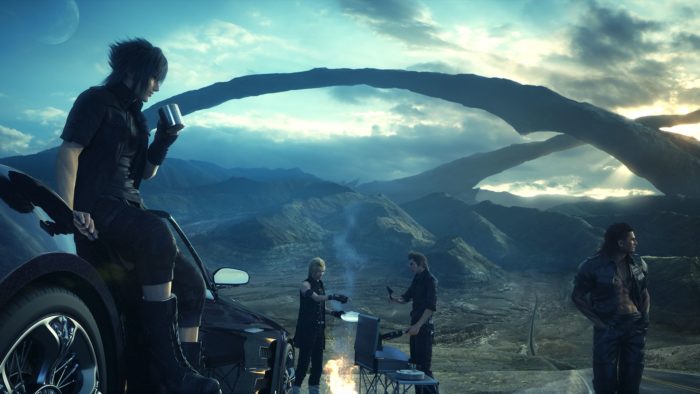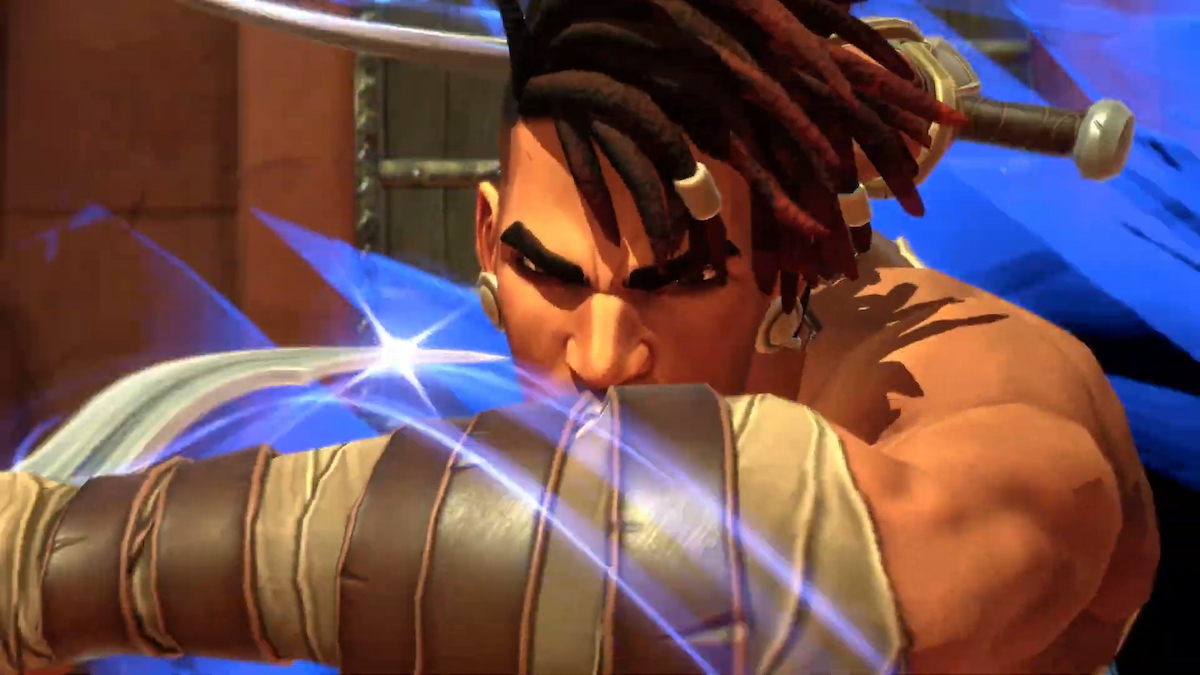Warning: This article contains story spoilers for Final Fantasy XV and Halo 5.
Video games are capable of telling incredible stories. Through a mix of gameplay and narrative-focused sections, they weave complex plots and introduce players to beautifully realized worlds. But some games don’t contain these stories in the game themselves, choosing instead to spread them across multiple forms of media. This works fine for extra insight into a story or a character, but a game’s main narrative should be contained to the game itself, and players shouldn’t have to seek out other material in order to understand the story of one singular product. Yet there are games that don’t see things like this.
Most recently, Final Fantasy XV told the majority of its story through outside media that included a beautifully animated film and a short anime series. However, this makes the main story appear muddled and disjointed. For the uninitiated, Final Fantasy XV, above anything, is about the journey of Noctis, the crown prince of Lucis, as he tries to take down the evil empire of Niflheim. After Noctis leaves his home in order to marry Lunafreya of Tenebrae, which is a part of a peace treaty between Lucis and Niflheim, the entire Niflheim fleet attacks the crown city of Insomnia on the day of the signing. Not only is the city ransacked, but the king – Noctis’ father – is also killed in the process, meaning that Noctis will be king much sooner than he expected.
The entire fall of Lucis is illustrated in the feature-length animated film, Kingsglaive. It explores the political situation between the two warring empires and the magical powers the king of Lucis controls. These powers are the result of a crystal which has protected Lucis’ crown city of Insomnia for years. A lot of the story and lore of Final Fantasy XV is developed and explored in the movie. The film opens with an explanation of the political turmoil that has swept across the world of Eos, giving viewers a better understanding of each character’s motivation. The film revolves around Niflheim’s betrayal of Lucis on the day of the peace treaty and the heroic death of the king. When the fall of Lucis occurs in the game, a few brief shots from Kingsglaive are shown as Noctis and his friends are informed via a newspaper that the city has fallen and the king is dead. The game chooses to gloss over these details, only letting you know that Noctis is the crown prince of Lucis. The lack of information only serves to dilute the narrative and confuse players new to the world.

Final Fantasy XV doesn’t just do this with one supplementary piece of media, though. The game’s main cast is comprised of Noctis and his three friends and royal companions, Prompto, Gladiolus, and Ignis. All three of them have a history with the young prince, and while this is touched on, it isn’t explored at all in the story. The game does feature flashbacks, but these are reserved for Noctis’ childhood where he experienced pivotal moments with his bride-to-be Luna, and his father. The backstories of the other three main characters are told in a short anime series titled Final Fantasy XV: Brotherhood. The five episode series tells stories that mark the beginning of Noctis’ friendship with each of his companions. It adds an immense amount to the story, developing a past for characters that are constantly present throughout the course of the game.
While these stories aren’t as pivotal as the lore behind Niflheim and Lucis, it still adds a lot to the game. The majority of players who are not Final Fantasy fans or who haven’t been actively looking forward to the release of the title will likely not seek out these other forms of media. This could detract from their enjoyment of the game, making it much more complicated than it needed to be had the developers only included that information in the game in some form. There isn’t an in-game encyclopedia or codex to read that gives extra, detailed information on the world, characters, and creatures that inhabit it. The separation of this content only makes the game less accessible and the story less enjoyable, both for those who know the world and those who do not. Even those who do have the knowledge to fill in the game’s backstory will be greeted by a disjointed narrative that feels half done. The core story of Final Fantasy XV ultimately suffers because of the decision to tell a large portion of the backstory in Kingsglaive and Brotherhood.

Another example of a game that tried to tell its story over multiple platforms is Halo 5: Guardians. The tale of Master Chief going rogue and the introduction of the new Spartan Locke hunting him down could have been an interesting tale that looked at the hero of the franchise in a new light. But the major details of the story, such as the return of Master Chief’s fellow Spartans and the recreation of Blue Team, are only told in books, TV shows, and podcasts.
The story clearly had a lot of moving parts, so the developers might have decided that setting the stage with other materials prior to the game’s launch would allow them to tell the story they wanted to tell in a more cohesive manner. But once again, the problem of accessibility arises. Instead of including these important details in the story proper, those who want to fully understand the narrative have to seek out and purchase other materials.
A game’s narrative should be told within the game and expanded upon using books and films to offer something to those who want something more without leaving everyone else confused. For example, each Assassin’s Creed title has always been given a novelization, telling the story of the game in written form and expanding upon some other smaller details of the plot. Outside materials can also be used to delve into the backstories of some characters that aren’t central to the plot, giving more characterization to the world as a whole. These Assassin’s Creed novels added to the experience, but never left the games feeling incomplete, as if the player was missing out on something vital.
Halo’s Blue Team was developed in a series of novels but hasn’t been present in any of the games. Players of Halo 4 will jump into Halo 5 expecting the story to continue but will instead be greeted by a variety of new characters and scenarios that are completely foreign. Even though those who did read the novels would have a greater understanding of the plot and Blue Team’s place in it, it puts a large percentage of the player base at a disadvantage.

Both Final Fantasy XV and Halo 5 are fantastic games, but this isn’t thanks to their narratives. The stories are too disjointed and incomplete. While the gameplay and characters are well realized and fleshed out, the story is spread too thin. Supplementary material should be used to expand upon a game’s story, not to tell a pivotal portion of it. These stories are better and more enjoyable when they are more focused and centered. Even if some information may be deemed uninteresting to the narrative, it is still important to include so the world that the developers are creating is as fully realized as it can be, further immersing players in it.





Published: Dec 19, 2016 01:47 pm